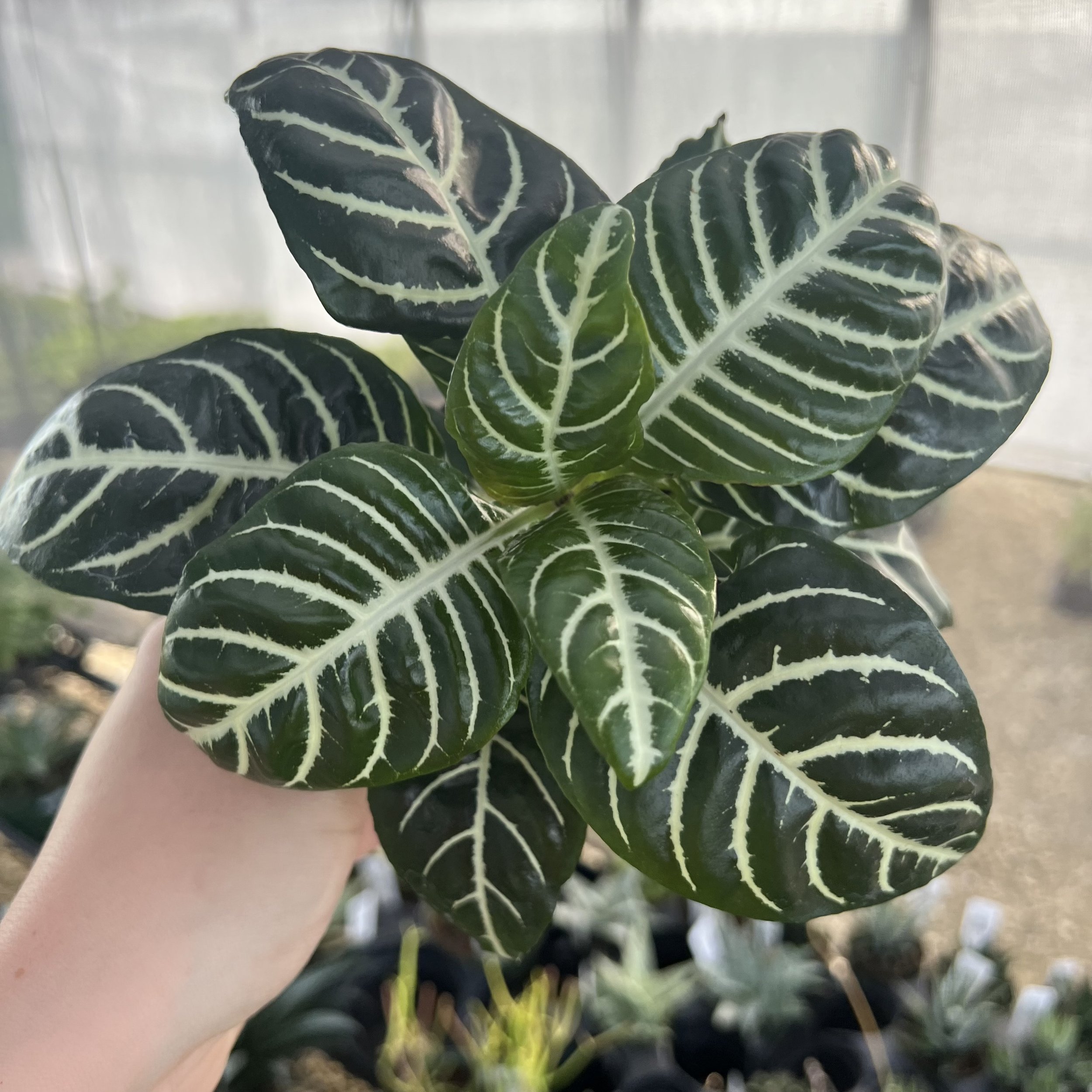
ZEBRA PLANT
Aphelandra
Family Acanthaceae
-
Light: Provide bright light, but not direct outdoor sun. A south or west facing window is a great spot for zebra plant. If you’re lucky, your plant will accumulate enough light to flower!
Temperature: 65-85 F
Humidity: medium to high; avoid drafty areas
Zebra plants tend to be sensitive to dry air. When winter approaches, especially, try adding a humidifier or humidity tray near the plant.
-
Water: Water when the top 2” of potting mix is dry. Zebra plants are fast drinkers! Check your plant weekly. If it dries out frequently, the plant will start to show brown leaf tips.
Repotting: Repot every 2-3 years into a slightly larger container (1-2” increased diameter or depth). Use a general purpose potting mix.
Fertilizing: Either…
Water Application: Incorporate fertilizer into your watering cycle once per month March through September. Dilute an all purpose fertilizer (20-20-20) by half OR use your favorite fertilizer rated for houseplant use in your water.
Slow Release: Incorporate slow release fertilizer pellets into the top inch of potting soil every 6 months. Apply the rate indicated for indoor plants on the label. If no recommendation for houseplants is present, apply 1/4 to 1/2 the listed rate.
-
Zebra plant is in the Acanthaceae family which also houses nerve plant (Fittonia) and polka dot plant (Hypoestes). Seems like this plant family has a thing for patterned leaves. Haha!
-
(Listed in order of commonality…)
Brown leaf tips from frequent dry down
Stretch if no pinch is performed (see FAQ)
Two-spotted spider mites
-
Is zebra plant pet safe?
Yes
Do zebra plants flower?
While zebra plants are known for their striking leaf venation. They also have a showy neon yellow flower that can bloom with enough light accumulation.
What do I do when the plant gets super tall?
You can “pinch” the top growing point to force horizontal branching. Take a clean snips and snip the top right off!
Have a more specific question?
I’m just a few clicks away.
